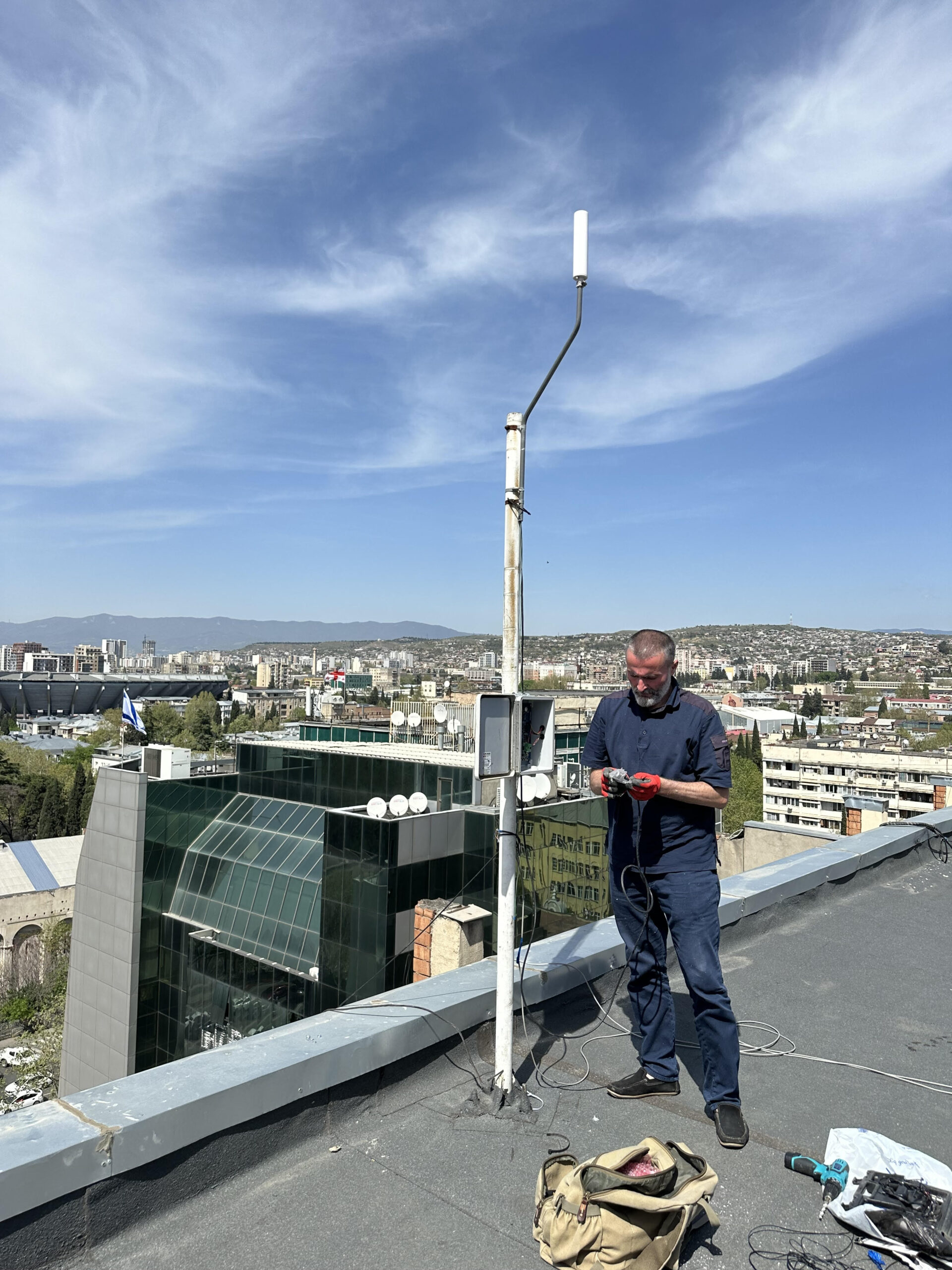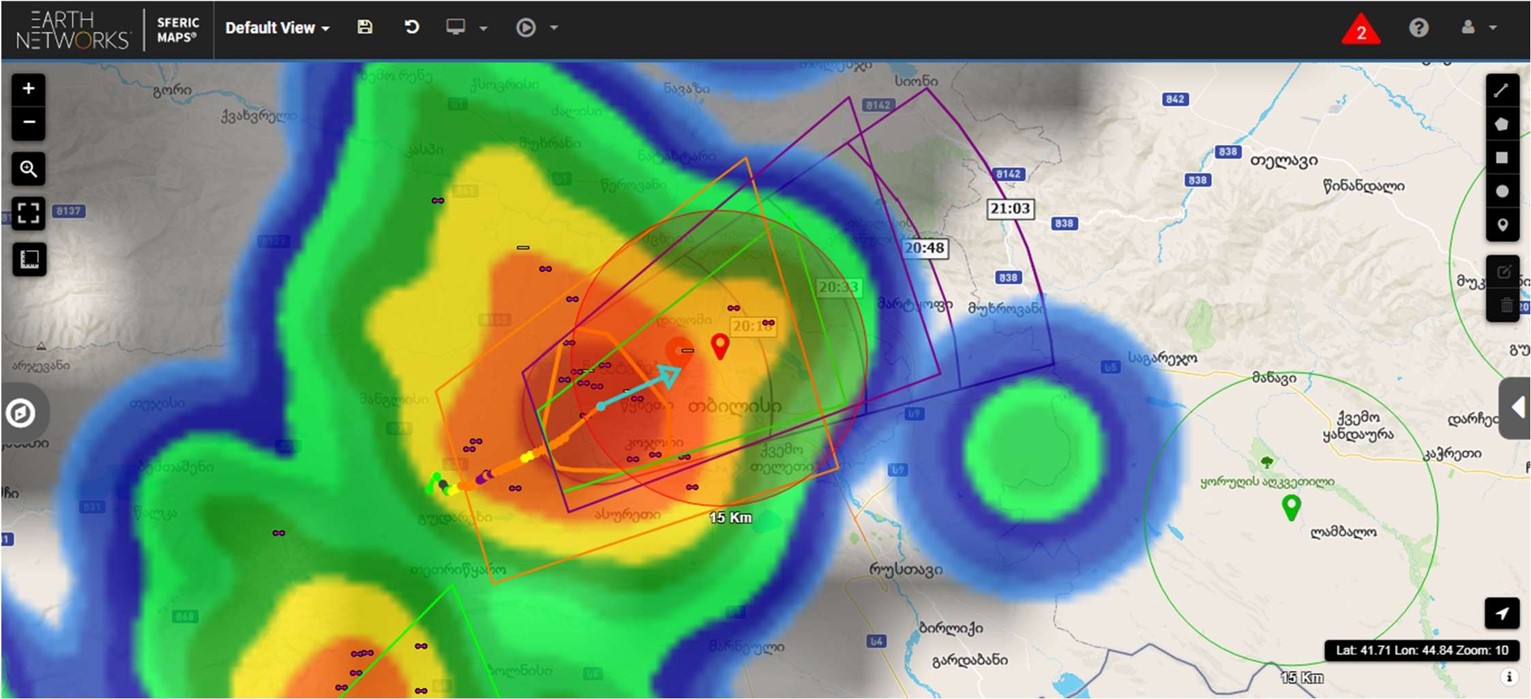Earth Networks Total Lightning Network®
AEM’s global lightning detection network delivers high-quality, trusted total lightning data to support real-time decisions worldwide.
Located along the southern edge of the Caucasus Mountains between the Black Sea and the Caspian Sea, the country of Georgia has long been a hotspot for hail and thunderstorms. Over the past two decades, the intensity of its thunderstorms has increased, bringing even more rain, hail, and lightning risk. The Kakheti wine region has been hit particularly hard with hail, which has caused extensive damage to hundreds of vineyards. This is especially problematic, given that wine-making in Georgia accounts for more than 5% of the country’s exports.


One of the biggest challenges in Georgia’s agriculture is the fight against hail, especially when winemaking is the main agricultural direction. Our company has been able to integrate AEM’s lightning detection sensors and Sferic Maps platform with anti-hail systems. This means that the fight against hail will be much more timely and effective for all Georgian winegrowers and companies operating in this field.
To mitigate hail damage, anti-hail systems have been installed throughout the area. When activated at the right moment, they can greatly reduce the probability of hail damage. However, the systems were designed to rely on weather radar to trigger their deployment. And this introduced its own set of challenges.
While the radar helped to ensure timely deployment of the anti-hail systems, its accuracy was still far below 100%.
Even with the radar in place, the hail systems did not always get activated in time to prevent hail damage from occurring.
The weather radar carried a high installation cost and high subscription cost. And since the fuel to operate the anti-hail systems is expensive, every false activation triggered by the radar carried a high price tag.
Our partner, Sensors & Smart Technologies (SST), is advancing agriculture, urban development, and natural disaster management throughout Georgia and the greater South Caucasus region by importing technology solutions from international partners like AEM and our family of brands. Their broad spectrum of services includes designing and installing weather stations and sensor systems, consulting, and implementing software to support monitoring and alerting.
SST was commissioned to find a more reliable and cost-efficient way of triggering the anti-hail systems. They understood that lightning – especially in-cloud lighting – is often an early indicator of hail and other forms of severe weather. They just needed a way to capture and analyze lightning observations to identify which storms posed a high risk of hail. That’s why SST turned to AEM for our lightning detection, analysis, and alerting.
To ensure the most accurate and efficient detection in critical areas, SST installed our lightning sensors in both the Kakheti region and the Georgian capital of Tbilisi.

SST leveraged our Sferic Maps® software, so stakeholders could see exactly when and where lightning was striking and identify areas of potential hail.

With the custom alerting capabilities of Sferic Maps and our proprietary Dangerous Thunderstorm Alerts, farmers, public officials, and the owners of hail protection systems could get the warnings they needed in time to prepare for probable hail and other types of inclement weather.
By tapping into AEM’s lightning detection, analysis, and alerting capabilities, SST is giving Georgia the ability to reliably and cost-efficiently predict which thunderstorm clouds are likely to produce hail and other forms of extreme weather. As a result, the costs of operating the anti-hail systems have fallen dramatically. And key stakeholders are being notified up to 45 minutes before hail begins to fall, providing precious time to activate their anti-hail systems. What’s more, the benefits of the new weather alerting system extend beyond the agricultural sector. Government facilities are leveraging the system to prepare for severe weather.